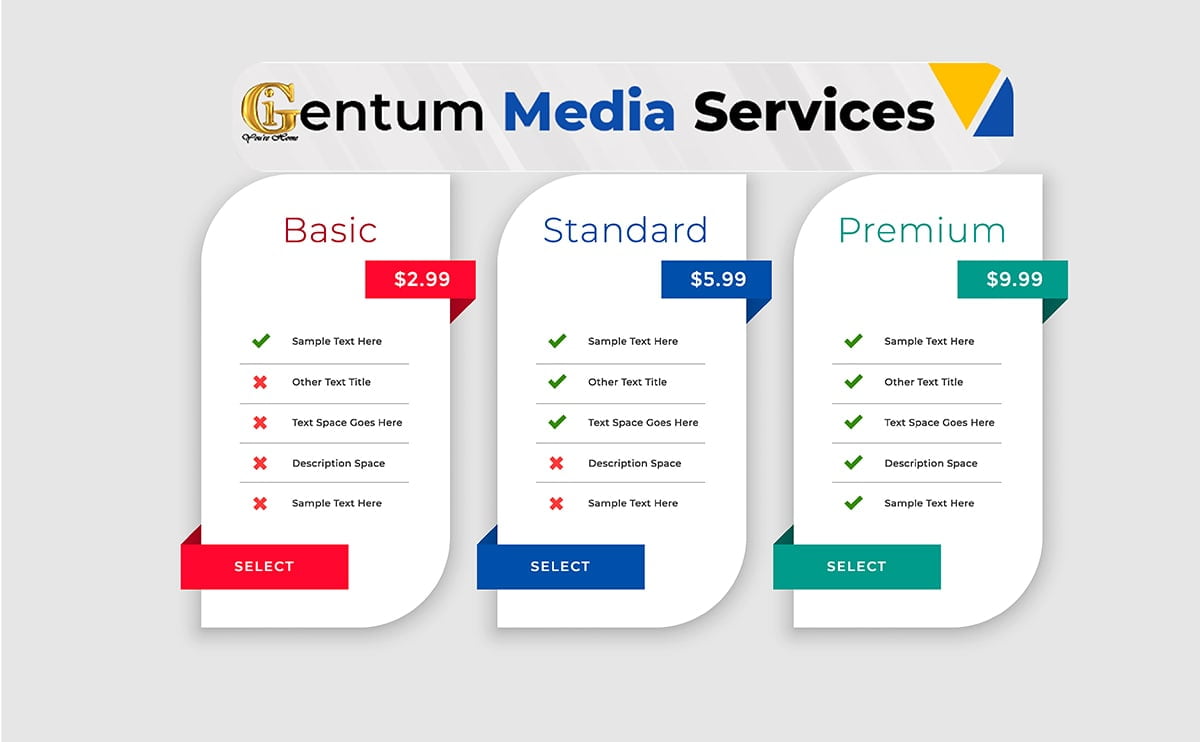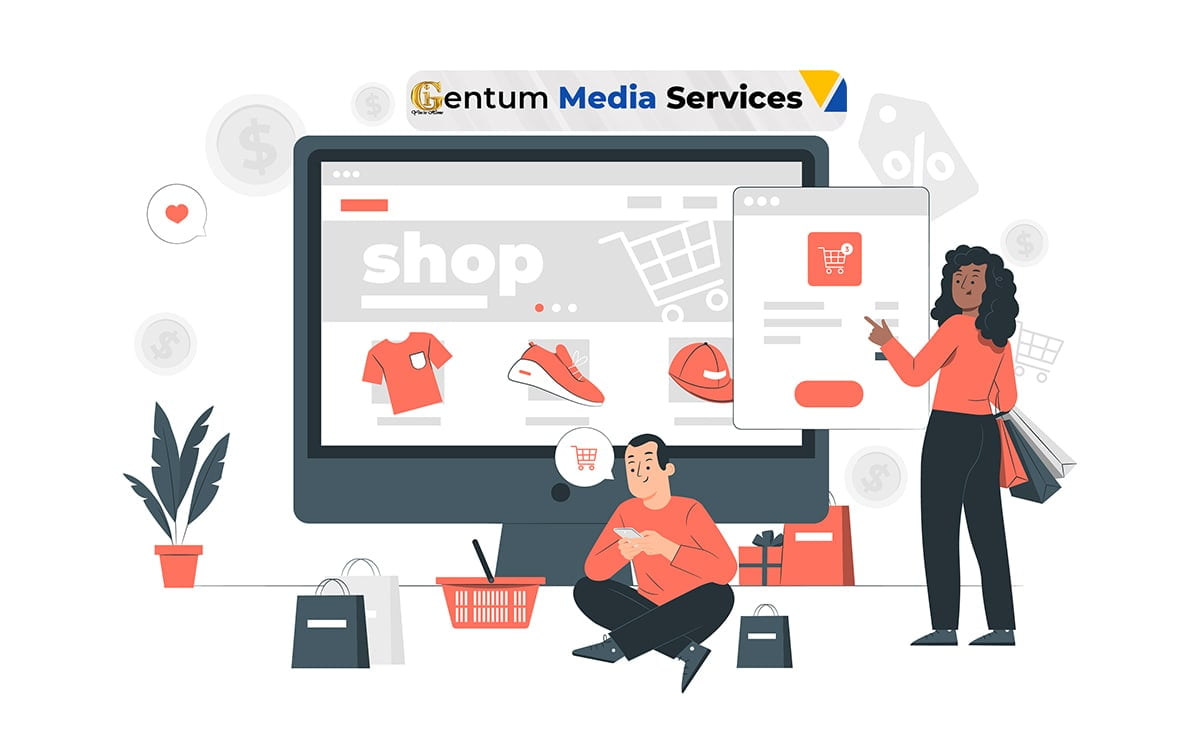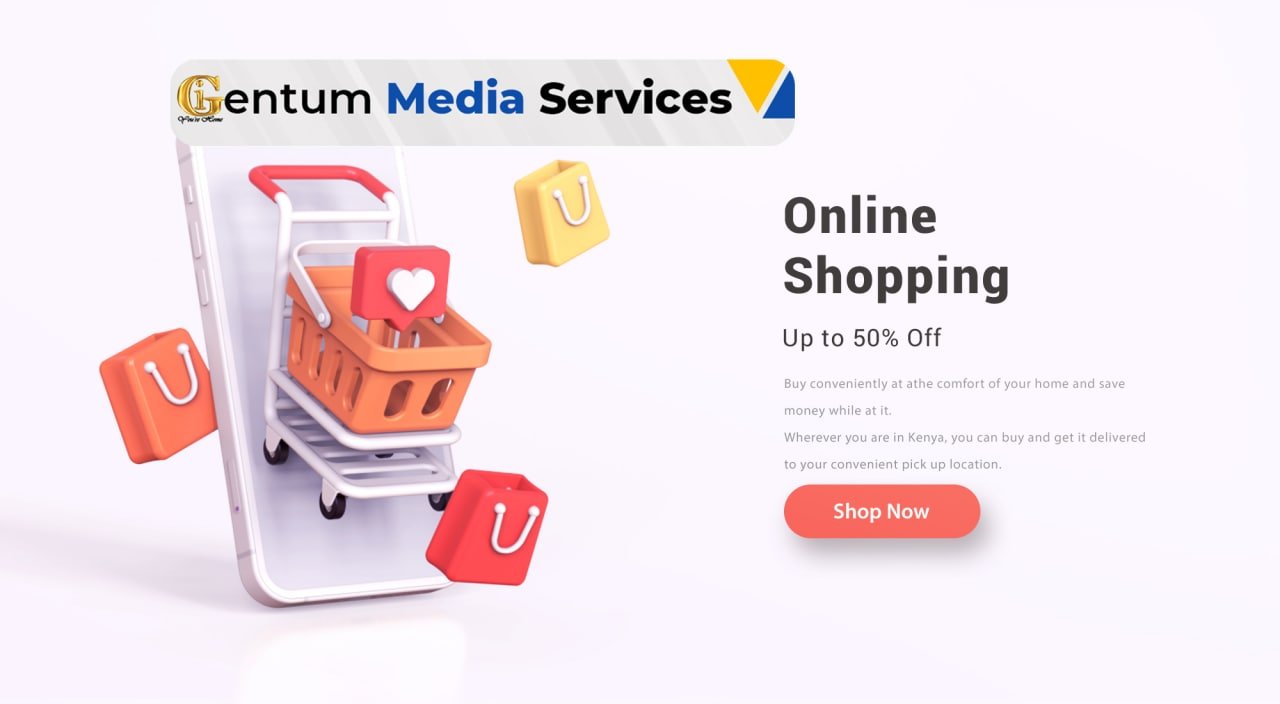
by admin | Dec 3, 2022 | Email Marketing
How to Setup Your Email Program.
Previous Read: Email Marketing Strategies.
Now that you know why email marketing is so effective, and you understand what makes it essential for your ecommerce business, it’s time to go in-depth about setting up your email program.
The good news is that it’s not as complicated as you think. In just five steps, you can begin sending effective emails to your online shop customers. Let’s find out below.
1. Start grabbing emails.
You can’t send emails without first developing an email list.
One of the best ways to do this is to add a signup form and popup form to your website. There are different ways to do this and different pros and cons to both, but in either case, the more comprehensive your list, the more potential and current customers you’ll reach with your marketing and promotional materials.
2. Segment your lists.
Once you have your list, you need to break it down into various segments depending on your marketing goals.
For example, you’ll want an email segment for:
- New subscribers
- Highly engaged subscribers
- Returning customers
- Abandoned carts
- Customer interests
- Demographics such as age, gender, and location
- Lead magnets such as eBook downloads, webinars, free samples, etc.
3. Design your email.
No one wants to read a poorly designed email. It immediately goes into the trash bin.
Instead, using one of the email marketing integrations — which we’ll cover later — design a creative and attractive email using one of their templates.
Or if you have experience with HTML, code your own.
A few key design features to keep in mind:
- An enticing subject line
- A personalized greeting
- A brief but helpful description
- Gorgeous visuals
- Compelling calls to action (CTAs)
4. A/B test.
In most cases, you won’t succeed in your email marketing on the first go-around. Like most things, it will take some practice and A/B testing.
A lot of email marketing software offers the ability to test which emails are most successful based on design, subject lines, segments, time sent, and more. The key is to A/B test one feature at a time before moving on to the next to ensure you are correctly understanding the impact from each variable.
5. Review results.
Once you’ve completed your A/B testing and you feel like you have the most optimized email marketing campaign possible, it’s time to review the results.
Take a look at things like your Click-Through Rate (CTR), Open Rate, Links Opened, Conversions, and more to see what you need to improve for next time.
Next Series: How to Build Your Email List.
The Digital Marketing Agency Services
Gentum Media Services offers state of the art Web Design and Development, Web Hosting Services, Digital Marketing, Corporate Branding and Social Media Management. Specific to this article, we are happy to support your business How to Setup Your Email Program.
Talk to us today and let us discuss your big project.

by admin | Dec 3, 2022 | Email Marketing
How to Build Your Email List.
Previous read: How to Setup Your Email Program.
So, how do you gain customer emails in the first place? It’s about giving your customers something in exchange for their email — that’s what makes it a compelling offer.
Below are a few of our favorite ideas for growing your email list organically and effectively.
1. Newsletters.
Create an opt-in form on your website that users can fill out to sign up for your shop’s newsletter. If you promise to provide your customers with value — discounts, resources or free items — that are only available via email, you’ll get customers to sign up left and right.
The key to an effective email opt-in is to make the signup a priority. We recommend placing it on a popup or at the bottom of your site for the best results.
2. Sweepstakes and giveaways.
Customers love to win things! Anything free is alright in their books.
That’s why many ecommerce shops host sweepstakes and giveaways to get more email subscribers signed up. If they have to submit their email in order to enter to win, they’ll do it, and you gain the benefit of a larger email list.
3. Cart abandonments.
You can set up cart abandonment software that will take a customer’s email information before they abandon your online shop at checkout. Then, send them a follow-up email to remind them of their cart, offer a discount on their purchase or provide reviews of their favorite products.
Cart abandonment emails are one of the best ways to get customers back to your shop to purchase.
4. Customer info.
Customers give email information to your site for order updates. You can take advantage of this by adding those emails to your marketing efforts.
Just make sure you have an opt-out field clearly labeled in this scenario.
6 Email Integrations for Your Next Campaign
The integration platform you choose for your email marketing campaigns will be crucial to your success. The good news is that there are many options that can handle your needs, whether you’re a small or medium-sized business.
Next Series: Email Integration for your next campaign.
The Digital Marketing Agency Services
Gentum Media Services offers state of the art Web Design and Development, Web Hosting Services, Digital Marketing, Corporate Branding and Social Media Management. Specific to this article, we are happy to support your business on How to Build Your Email List
Talk to us today and let us discuss your big project.

by admin | Dec 3, 2022 | Email Marketing
Email Integrations for Your Next Campaign
Previous Read: How to Build Your Mail List.
The integration platform you choose for your email marketing campaigns will be crucial to your success. The good news is that there are many options that can handle your needs, whether you’re a small or medium-sized business.
Below are a few of the top email integrations (in alphabetical order) you should consider:
1. Constant Contact.
Constant Contact can help you connect with customers, grow your business, and monitor your results in real-time. It delivers everything you need to keep your email list up to date, including the ability to easily sync and store contacts.
Some of our favorite features include:
- 100+ mobile-optimized and customizable email templates.
- Contact segmentation based on clicks.
- Automatic welcome emails.
- Subject line testing.
- Real-time reporting and robust analytics.
2. Happy Email.
Happy Email automatically helps you send a welcome email to your customers from your store owner (you). The email is sent within 30 minutes of your customer making their first purchase or signing up for a new account.
The goal of Happy Email is to help you create a personal touch that gains trust from your customers.
It’s a great integration because:
- It’s 100% free.
- It takes one click to install, and then everything is automated.
- It offers a friendly editor for customization.
- It offers branding to build trust and authenticity.
3. Klaviyo.
Klaviyo helps you build real, quality relationships with your customers. It does this by allowing you to listen for and understand cues from your visitors, subscribers, and customers.
In this way, you can deliver on your marketing promises and turn valuable customer information into actionable items.
With Klaviyo, you can:
- Automatically capture customer information from your website, including purchase history, browse behavior, cart information, product details, and more.
- Set up abandoned cart emails and filter your email messages by target audience with advanced splits.
- Use web popups and sign-up forms to create a customized customer experience on your website.
- Gain high-level metrics all about how your email marketing is working and contributing to your bottom line.
4. Mailchimp.
Mailchimp helps you design beautiful, personalized emails so you can reach your customers and grow your business.
Some of our favorite features include:
- The ability to organize your contacts by tags for easy segmentation of your emails.
- Automated marketing emails based on abandoned carts, lapsed customers, product recommendations, and post-purchase follow-ups.
- A/B testing so you can optimize your marketing campaigns.
- Detailed email data, including growth, engagement, and revenue reports.
5. Omnisend.
Omnisend provides all of the email and marketing automation tools you need in one platform. It offers seamless usability all in one app that helps you convert visitors into repeat customers, so you sell 20-30% more.
From growing your email list to automated campaigns and abandoned cart recovery, Omnisend helps you master email marketing in minutes.
Some of the features that stand out include:
- Single-click BigCommerce integration.
- Ready-to-use email templates that you can customize as you wish.
- Automatic product import for better newsletters and promotional campaigns.
- Email and SMS automation, including browse and cart abandonment, welcome and confirmation emails, order follow-up, and more.
- Sign-up forms, including sign-up boxes, popups, Wheel of Fortune, and landing pages.
- Detailed segmentation and marketing report options based on your needs.
6. Privy.
Privy helps small and large businesses capture and convert website visitors into loyal customers.
Using popups, spin to win, unique coupon codes, and more, you can reduce cart abandonment, create high-converting messages, and run targeted promotions that work.
Some of the top features of Privy include:
- The ability to trigger popups using exit intent, scroll, cart value, time on site, and more.
- A/B testing of your campaigns to optimize performance.
- The ability to sync contacts to all your email and marketing platforms as well as your BigCommerce store.
- Automated email newsletters, order follow-up emails, coupon reminders, cart recovery emails, and more.
- Robust on-site targeting and segmentation capabilities.
Next Series: How to Elevate Your Email Marketing Campaigns
The Digital Marketing Agency
Gentum Media Services offers state of the art Web Design and Development, Web Hosting Services, Digital Marketing, Corporate Branding and Social Media Management. Specific to this article, we are happy to support your business gain from Email Integrations for Your Next Campaign.
Talk to us today and let us discuss your big project.

by admin | Dec 3, 2022 | Email Marketing
How to Elevate Your Email Marketing Campaigns
Previous Read: Email Integration For Your Next Campaign
At this point, it’s time to start looking at how you can take your email marketing campaigns to the next level.
Different departments and stakeholders may have different priorities, but your goal should be to create and deliver cleverly written emails that attract your customers’ attention, increase sales, and build stronger relationships.
There are two key steps to get started.
1. Focus on deliverability.
If your email marketing campaigns don’t make it to your customers, there’s no point.
Of course, some spammy messages, bounces, and missed opportunities are inevitable. However, by focusing on the five key points below, you can hone your emails, so they get into your customers’ inboxes.
Monitor engagement by domain. It’s possible to have a weak domain reputation with one domain (e.g., Gmail, Hotmail, Yahoo, etc.) but a strong one with another.
Make sure to monitor each campaign to see how the open rates trend. Anything below 10% is a red flag and suggests that you might be hitting your recipients’ spam folders.
Segment lists based on domain performance. Based on the domain performance you’ve analyzed above, segment out non-engaged users, specifically in domains with poor engagement (below 15% open rates).
Don’t be afraid to go as narrow with your list as you need to start seeing stronger open rates. Only then should you begin widening your list.
In many instances when employing this strategy, you can see more total opens even after cutting your send list in half. This is because the low open rates don’t necessarily mean your subscribers aren’t interested, but could mean the domain providers aren’t allowing your emails to get through.
Avoid spammy subject lines. Email Service Providers will flag certain words as spammy. Avoiding these words (such as free, winner, and others), can help ensure that your company’s emails get delivered to your customers’ inboxes.
Sign up for Google Postmasters. Google Postmasters helps you monitor your reputation with Gmail, monitor your email performance, and route your messages correctly.
Write alt text. There will be instances where images don’t show up in your email, which can be an issue with emails that consist mainly of images. Email Providers often provide functionality where, in this case, you can provide alt text as an image replacement, so the recipient knows what’s missing.
Email Service Providers use alt text as a factor in determining sender reputation, which ultimately impacts email deliverability. Including alt text helps tick the box and can keep your reputation strong.
Ask your subscribers to whitelist your emails. Requesting that your subscribers save your email address or save the emails to the primary tab ensures the emails don’t go to the promotions or spam folders.
Enable double authentication. Requiring users to confirm their interest in joining your list ensures that the only people receiving your emails are ones that can be expected to open them.
More on How to Elevate Your Email Marketing Campaigns
2. Set Up Automatic Email Series.
Your main goal should be to drive more sales in less time, automatically. That’s why you need to focus on setting up automatic email series.
Below, we outline four email series ideas you can and should use.
Welcome series. Create an email welcome series with preferably three emails.
- First, consider offering a promotion with a discount code for joining your list.
- Then, automatically email the customer back in 1-2 days if they don’t purchase using the code.
- Finally, email them noting that the promo code will expire shortly and they shouldn’t miss out. This creates urgency.
Abandoned cart series. Create a three-part abandoned cart email series.
- First, email to offer a discount code to complete their checkout.
- Second, send a follow-up email, reminding them to complete their order with the discount code.
- Third, send a final follow-up email.
Re-engagement series. Create a re-engagement campaign series that targets unengaged users.
Email anyone who hasn’t engaged with your campaigns in a while. The exact timing you should follow depends on your industry. For example, ecommerce can be six months while daily newsletters can be a few weeks.
Then, if the customer continues not to engage, unsubscribe them from your list.
Triggered email series. You should also consider getting more creative with your triggered email series.
Below are a few examples:
- Create a birthday series that sends a coupon code as a birthday gift.
- Create a browse abandonment email, which sends to anyone who browsed a product.
- Create a post-purchase email series asking purchasers for reviews of their recently purchased product. Include some suggestions of other products they might like.
- Create a back-in-stock email series that lets subscribers know their product is back in stock.
Next Series: Best Practices for Getting Higher Open Rates
The Digital Marketing Agency
Gentum Media Services offers state of the art Web Design and Development, Web Hosting Services, Digital Marketing, Corporate Branding and Social Media Management. Specific to this article, we are happy to support your business gain on How to Elevate Your Email Marketing Campaigns.
Talk to us today and let us discuss your big project.

by admin | Dec 3, 2022 | Email Marketing
Best Practices for Getting Higher Open Rates.
Previous Article: How to Elevate Your Email Marketing Campaigns
Now that you have the designed emails and you’ve taken steps to ensure they can get through to the inbox, you need to focus on getting higher open rates due to the actual content.
Whether you’re sending out welcome emails or cart abandonment emails with a coupon code, you want your customers to read what you’re sending.
Below are eight things to consider when trying to improve your email open rates.
1. Include clear “Unsubscribe” buttons.
Don’t make your potential customers search for a way out. Clearly give them a way to unsubscribe to your email list if they are not interested.
2. Personalize with segmented lists.
Customers want to feel like the emails they receive are meant for them and them alone.
Segmenting lists allows you to send more personalized emails with segment-specific customer data.
3. Test your emails.
Always test your emails to make sure you’re sending them out at the right time and with the right subject line.
Many of the email integrations mentioned above offer A/B testing, so you can directly track your email performance based on minute changes.
4. Clean your lists regularly.
Don’t keep spamming inactive users with emails. Trim your lists when they have too many inactive users.
A good place to start is by tracking domain performance, as mentioned above, and removing inactive users based on those open rates.
5. Write like a human.
Don’t sound overly robotic in your sales voice. Write to customers as if you’re giving them the inside scoop on something they want to hear.
Be a friend, not a robot.
6. Use emojis, numbers, and special characters (but not too much).
Make your subject line stand out with emojis, numbers, and special characters.
????Save On the Hottest Shades of 2020!
Just make sure you don’t go overboard and send something like this: CRAZY????GOOD????GLASSES????2020
7. Always include preview text.
Preview text is another tool you can use to entice users to engage with your content.
Tell them more about what your email contains and why they should open it.
If left blank, this text often appears meaningless (such as “view this email in your browser”), which wastes valuable space that could have been used to draw the recipient in.
8. Keep content quality high.
Make sure the email copy is engaging and promotes conversions. The better you write, the more likely your customers will want to open the email and keep reading.
Read about How to Elevate Your Email Marketing Campaigns
The Digital Marketing Agency
Gentum Media Services offers state of the art Web Design and Development, Web Hosting Services, Digital Marketing, Corporate Branding and Social Media Management. Specific to this article, we are happy to support your business gain Find out the Best Practices for Getting Higher Open Rates.
Talk to us today and let us discuss your big project.

by admin | Dec 3, 2022 | news
List of Courier Companies in Kenya for Local and International Shipping. There are several reliable courier companies in Kenya that provide professional delivery services locally and abroad. If you wish to make a delivery, you need to know the available options and the terms and conditions
Courier companies in Kenya provide merchandise shipments to various destinations. These agencies maintain the highest standards with regards to security, speed, accessibility, and reliability. They help move documents and parcels via Kenya railway services, merchandised cargo, train services, and bus services.
Find The Top 10 Courier Companies in Kenya for Local and International Shipping
Companies offering courier services in Kenya specialize in all types of deliveries ranging from low to high volume packages. These deliveries vary from regional, national and international, ensuring that they cut across different market demands. Courier services come in handy to anyone seeking professionalism. Hiring such services removes the burden of worrying about lost packages or late deliveries. Presently, there are over 100 logistics management agencies and below is a list of courier companies in Kenya.
1. DHL Worldwide Express Ltd

Borispol, Ukraine – May 22, 2015: Boryspil International Airport. The Boeing 757-200 to transport cargo company DHL
Some of the services that clients enjoy from DHL include express parcel and packaging, transit monitoring options, among others. Delivery of goods can either be through water, rail, road or air. DHL is universally recognized as one of the registered courier companies globally.
2. G4S
With skilled and dependable conveyance, G4S is one of the top-most preferred courier agencies. It offers a wide range of transport services, with their motorbike carriage being the most consumed locally. Its dispatch places are deliberately spread nationwide while offering affordable courier charges in Kenya.
3. Fargo Courier
If you are trading internationally, the Fargo Courier services are ideal. Well-known for its high standards and reliability, Fargo is an option for dealers receiving international packages in Kenya. Furthermore, its warehouses are conducive and secure for shipment storage.
4. TNT Express Worldwide Kenya

With global recognition, TNT is one of the most reliable national courier companies for all delivery needs. It connects business to people by offering door-to-door shipping through water, air and road to more than 200 countries
5. ABC International Cargo Logistics Limited
Located along Gilgil Road, off Enterprise Road, ABC International Logistics company guarantees hassle-free services to its clients. It is an international cargo logistics provider company with a broad market spilling to more than 28 countries.
6. Seabourne International Limited
One of the things that stand out at Seabourne International Limited is the exemplary customer service. Clients booking cargo services with them attest to first-class treatment. It is one of the courier companies in Nairobi with its offices situated in Belle Vue at the Mirage Plaza, 2nd Floor
7. Skynet Worldwide Express
Skynet provides logistic solutions globally. Its economy express offers freight shipment for documents and other merchandise. Shipments are tracked virtually while adhering to strict timelines, which are overseen and maintained by professionals.
8. Posta Kenya
Among the oldest courier companies in Kenya, Posta courier services are ideal for local and inter-region deliveries. Its mailing station services are accessible with cost-friendly packages. The firm has more than 600 outlets countrywide.
9. United Parcel Service
United Parcel Service (UPS) is among the most significant supply chain management systems in the world. It serves approximately 8 million clients in over 200 countries daily and is one of the most reliable courier agencies. Its Kenyan establishment is located at the SDV Transami Complex, Airport North Road, Embakasi.
10. Aramex Ltd

Aramex is a well known global transportation and logistics solutions company that offers the best services at competitive prices. It offers worldwide shipping solutions. It has invested heavily in technology to give you the best services; you can track your shipment online.
You may find this article helpful about How to Create an Online Store.
Our Services
Gentum Media Services offers state of the art Web Design and Development, Web Hosting Services, Digital Marketing, Corporate Branding and Social Media Management.
Talk to us today and let us discuss your big project.

by admin | Dec 3, 2022 | Digital Marketing, news
Free Business Listing Sites in Kenya
Online business listing is one of the best free digital marketing strategy that can significantly boost your online presence. It involves sites that are dedicated to availing information about various businesses by categorizing them. Online business listing sites makes it easy for targeted customers to search for your business when in need of a certain product(s) or service(s). However, an online business listing site can be free or paid for.
Below are our top 10 online business listing websites in Kenya to list your brand and watch it grow online authority.
Google my business listing is free to use tool that not only create a listing for your business on google but also manage your company’s appearance on search engine. When properly optimized, customers can easily discover, learn about, and contact your business.
This one is very popular among Kenyan consumers. They know that they can trust this site to provide respective providers for services or products of their interest. Your business could never go wrong for trusting this listing site.
Going by its already self-explanatory name, this business listing site is equally reliable in matters of business promotion. It doesn’t matter what your business or brand is about, because this site promotes all of them. You will find NGOs, entertainment, health insurance, fashion and beauty companies or businesses, etc.
Is your business or brand about mobile phones and accessories, furniture, computer and electronics and any other business you can think? PigiaMe has you covered as a site where you can list your brand and wait for customers to contact you.
Are you dealing with real estate, automotive and spare parts? If you are also offering services like gym training, house helps, cleaning, music lessons, etc., this site may help you.
For business owners located in Nakuru, Kenya, this site is quite reliable in marketing your brand. Hotels and travel and tourism, real estate, education, energy, events planning, ICT are just some of the few businesses or companies that you can list on this site.
This business listing site can be reliable to several businesses that fall under categories of entertainment and lifestyle, food and drink, building and construction, financial and legal and business services. Computer and internet based businesses can also utilize this site to create awareness of their services.
This is yet another site to list your business. All you need to do is provide your business details such as the name of the product or services you are offering, town or location and contacts. Any other additional information could be helpful too.
Not only does this site help business owners to list their businesses, but it also helps entities looking for potential employees. Should you need qualified employees for any job(s) as a company, use this site to list the vacancies.
Whether you are into hairdressing, real estate brokerage, health, and insurance, motor industry, etc., list your business at kenyaplex.com.
Our Services
Gentum Media Services offers state of the art Web Design and Development, Web Hosting Services, Digital Marketing, Corporate Branding and Social Media Management.
Talk to us today and let us discuss your big project.

by admin | Dec 3, 2022 | Digital Marketing, news, Online Jobs In Kenya
Ecommerce marketing is the practice of driving top-of-funnel traffic to convert into sales and new customers — and there are many ways to go about it.
From focusing on organic traffic and SEO to using Facebook or Google ads to drive targeted traffic, you can mix and match paid strategies with non-paid strategies, all to figure out which marketing mix converts the most people.
However, marketing campaigns are never static. As marketing tactics and marketplace algorithms evolve, so too must your plan to gain the highest return on ad spend and operating costs associated with non-paid growth strategies like SEO.
In a constantly changing and increasingly competitive environment, you need to make a concerted effort to increase sales at your online store. A lack of determination is why revenue goals aren’t met for many businesses. With the U.S. retail ecommerce revenue slated to hit $1.3 trillion by 2025, you don’t want to miss the boat.
How to Build an Ecommerce Marketing Plan
As you’re laying the groundwork for your ecommerce future, go through the following exercises while writing your business plan to ensure that your methods and strategy are well thought out and will stand the test of time.
Executive summary.
An executive summary is critical to an ecommerce marketing plan as it provides a broad overview of the project that is easily disseminated to leaders and decision-makers within your business.
The executive summary should summarize the key points of your strategy, including its overall purpose, desired results and project recommendations.
Goals and objectives.
Make your goals and objectives clear and specific. Once you begin to execute, there’s no shame in amending your goals if they turn out to be too low or too high.
Eventually, your primary focus should be on creating realistic, attainable goals before setting stretch goals to motivate yourself or your team.
Read about Survey jobs in Kenya that pay through Mpesa.
Mission statement and value proposition.
When building an ecommerce marketing plan, you must be able to answer the following basic questions:
- What’s the purpose of this company?
- What do you do?
- What don’t you do?
Not all companies need a philanthropic element to the business, but there needs to be a clear mission and value proposition.
Target customers, personas and markets.
Know your audience. If you don’t have a clear understanding of who you’re targeting, what characteristics define them and their location, you’re bound to run inefficient campaigns that waste money targeting low-converting, unqualified individuals.
Make sure to know the following:
- Age ranges.
- Gender breakdown.
- Geographic location.
- Purchasing power.
- Online shopping habits.
Situation analysis.
Make sure to perform a thorough assessment of the company’s current state, your user experience, the competition and the overall marketing plan.
Leave no stone unturned. A better understanding of your current situation will lead to better decision-making and, eventually, better results.
Read about Digital Marketing Opportunities for your business.
Pricing and positioning strategy.
Do your research. Ensure your pricing and positioning provides real value to your target audience and increase customer loyalty. Forcing new products upon your target customers that they deem overpriced is a losing proposition, especially when modern price comparison is effortless.
There will be opportunities for testing and refinement throughout your product’s lifecycle, but by doing a little more work upfront, you’ll be better off in the long run.
Distribution and fulfillment plan.
Even if you’re starting small, you should have a clear understanding of the distribution and order fulfillment requirements that will evolve as you grow.
Whether you are packing and shipping yourself, overseeing a small team, or leveraging a third-party fulfillment shop, you need to know whether your fulfillment processes can meet the demand of your upcoming marketing push.
After you’ve written your plans, make sure to spend time tweaking, refining and evolving them over time.
Executing an Ecommerce Marketing Plan
By this point, you should have a clear understanding of the subtle nuances that define your business.
If you’re a small business, or even an online retailer, this is when you start laying the groundwork for future growth, and if you’re more established, this is how you expedite your growth trajectory:
Read about ecommerce platforms in Kenya.
Determine your sales and lead generation strategy.
Because this is where the one-size-fits-all answers stop, you will need to get creative. The number of ways to market your business is potentially endless.
Even though the enormous list of digital marketing buzzwords can make your head spin, we’ll highlight the strategies and marketing tools that have proven track records of results and some newer strategies to consider.
Imagine a sales funnel graphic that shows your customers’ path from Awareness to Interest to Desire to Action. Each stage in this process should include notes about the specific marketing strategies you’ll employ to usher potential customers through that funnel.
At the top of the funnel, you’ll see ecommerce brand awareness-building strategies that don’t often produce immediate conversions — like posting organic social content or programmatic display ads. At the bottom, you’ll see Google search network advertisements, Instagram retargeting ads and direct email communication.
As a marketer, you’ll want to consider the primary purpose of every campaign strategy you employ and where it fits in your funnel.
Get technology and reporting software.
Before you make a serious marketing push, you must be able to answer the following questions:
- Is the technology I’m currently using to track the effectiveness of my marketing efforts adequate?
- Can it be used to determine whether or not the KPIs I’m seeking to improve are improving?
- Will it help our team accurately determine the ROI of our actions?
As mentioned earlier, the sheer number of marketing channels continues to rise, and the tools you’re using to track that information need to be sufficient.
A few great tools to consider are:
Start with conversions.
Within your lead generation and sales funnel plan, there should be specific bottom of the funnel strategies designed to get customers over the finish line. Roll out these campaigns first to generate sales and build positive momentum.
At the end of the day, conversion rates are amongst the most valuable statistics for an ecommerce business, and understanding them is critical to the long-term success of your business.
Test the waters.
Allocate part of your ecommerce marketing budget to test new strategies. After all, you’ll never know what works well and what doesn’t until you try it.
Depending on your budget, running some simple test cases in smaller markets can provide you with the ammunition you need to justify a budget increase, validate your prior recommendations and/or open the door to an entirely new market opportunity
Refine and expand your ecommerce marketing strategy.
Once you have seen positive momentum, you are ready to refine and expand your ecommerce marketing strategy. By now, you should have a good understanding of what’s working, what needs improvement, and what opportunities exist.
Therefore, refine and ramp up your initial strategies by increasing your budget and scaling up. Here. is where you can get even more creative.
Some strategies to consider are:
- Joint Ventures and Partnerships: Complementary brands have found success through partnerships. You can co-create content that exposes both brands to each other’s email lists or bundle a curated holiday gift package across several brands. When the brands align, both brands benefit.
- Increase Average Order Value (AOV): Once you’ve grown into consistent sales, it is time to increase the average order value. Tier your discount codes to incentive larger purchases or offer expedited shipping for orders 50% higher than your current AOV.
- Referrals: Offer current and loyal customers the opportunity to refer a friend and reap the rewards. If your customer experience is a pleasant one, your customer base could become an army of brand advocates.
Conclusion
Crafting a well-thought-out ecommerce marketing plan may seem daunting.
However, the wealth of strategies and channels that can help drive online sales is enormous and continuing to grow. While you may be tempted to go off to the races, intentionality is critical when you first begin developing an ecommerce marketing strategy.
Make sure you have a deep understanding of your product and the demand for your product, and don’t be afraid to make assumptions — so long as you test them.
Ecommerce marketers may feel like kids in a candy ecommerce store, trying to decide which new flavors to try today. As long as you’re organized, detail-oriented and willing to learn, it’s hard to go wrong.
Our Services
Gentum Media Services offers state of the art Web Design and Development, Web Hosting Services, Digital Marketing, Corporate Branding and Social Media Management.
Talk to us today and let us discuss your big project.

by admin | Dec 3, 2022 | Digital Marketing, news
Top 10 eCommerce Advertising Platforms in Kenya: eCommerce advertising platforms are online business listing sites to help ecommerce businesses create awareness for products and services and increase sales. An ecommerce marketing agency can help you identify the best placements with great impressions, click, and leads to sales. To effectively grow your ecommerce business- whether or not you have a physical shop- you need to leverage on the best ecommerce platforms that drive brand awareness and increase sales.
There are tons of eCommerce advertising platforms to list your products and services. We’ve rounded up the best top 10 eCommerce advertising platforms in Kenya in this article.
Jumia is arguably one of the best eCommerce advertising Platforms in Kenya. It records significantly high traffic of about 100,000 visitors per day. Additionally, you can showcase all your products under one roof.
Your business will need to use the following ecommerce advertising techniques to succeed in this marketplace:
- Have an SEO- Ready Ecommerce website.
- Create all-round eCommerce Marketing strategies
- Excellent customer service
- Transparency
2. Jiji Kenya
Jiji allows you to post free ads and sell your goods with sheer simplicity. You can also choose premium services with various ecommerce advertising methods to reach your target audience and make sales. With Jiji, you sell products and services online even without a retail presence. Just like any other ecommerce marketing strategies, use the right keywords for customers to find your products. The ecommerce platform in Kenya has top-notch security protocol to protect you and your buyers.
3. Kilimall
Kilimall came into existence in 2014 and has a following of 1 million Facebook users. On that account, with an effective eCommerce Marketing Strategy you can expect to sell your items without a hassle. Kilimall connects you directly to customers which is a huge plus. Another unique feature about this ecommerce platform in Kenya is that customers pay for goods first before delivery on all items including:
- Electronics
- Clothing
- Beauty products
- Sports and outdoor equipment
4. Masoko
Masoko is an eCommerce advertising website powered by Safaricom. You can showcase all your products, provided they are of high quality. Masoko accepts the following payment methods:
- M-PESA
- Bonga points
- Credit card
One of the best eCommerce Marketing strategies on this platform is to use relevant keywords since customers have to search for goods on the website.
5. Sky Garden
Sky. Garden offers an excellent ecommerce advertising platform in Kenya to reach potential buyers. Your ecommerce business also gets to enjoy shipping options and automated payment. Plus, you can upload videos that display your products in detail. The site comes with secure and flexible payments in the form of M-PESA, visa, and MasterCard.
6. BuyRentKenya
If you have any property you want to sell, BuyRentKenya is the place to be. This eCommerce site requires you to register first before advertising any property. The best part is that BuyRentKenya records about 300,000 users each month.
It also features the following:
- Lead generation
- Integrated CRM
7. Craigslist
Craigslist Kenya provides local classified advertisements for ecommerce business to post about their products and services. The ecommerce platform offers a wide national reach that can significantly increase your company’s online viability.
Craigslist is outstanding especially for small businesses. You can only run ads when you’ve fully registered on the website, promoting products and services for free.
8. Alibaba
Alibaba is a well-known marketplace to advertise apparel, electronics, and much more. Your products can get categorized as new arrivals, popular items, or new designs. Although Alibaba is headquartered in China, it’s available worldwide.
This eCommerce site has two advantages, which are:
- Effective target.
- Increased sales due to many users on the platform.
9. PigiaMe
PigiaMe allowes you to create free online advertising depending on what you intend to sell. Besides that, premium ads are available to grow your ecommerce business. PigiaMe allows you to advertise both products and services, regardless of your location. If you have trouble customizing your ads, work with an eCommerce digital marketing agency in Kenya.
10. Jambo Shop
Jambo Shop can propel your ecommerce business to a higher level, thanks to many customers on the platform. You can set up your account using your store name and email. This site also offers reliable 24/7 support if you have any issues. Jambo Shop is an ideal place to promote your brand via mobile or desktop.
Final Thoughts
The above ecommerce platforms are helpful when you need to grow your online reach and make more profits. If placing ads seems daunting, Partner with the best eCommerce advertising agency get customized digital marketing solutions for your brand.
Our Services
Gentum Media Services offers state of the art Web Design and Development, Web Hosting Services, Digital Marketing, Corporate Branding and Social Media Management.
Talk to us today and let us discuss your big project.

by admin | Dec 3, 2022 | news
In this article, we highlight how to create an online store that really means something to you as an entrepreneur. Historically, success in commerce was defined by a simple formula:
- Secure a profitable spot for your cart.
- Shout louder than your competitor to attract more foot traffic.
- Operate at a lower cost to pocket more profits.
In the 21st century, it is no longer that simple. Large, vocal brands often fail to connect with modern consumers. The physical location can be more of a nuisance than a convenience and a small store can be operated with a lean budget and no inventory at all.
This shift grew even more pronounced during the COVID-19 pandemic, as the retail sector went through major turmoil. One unexpected side effect of the unfortunate global events was the growth of digital sales:
- 46% of U.S. consumerstried a new brand or placed orders with new retailers last year.
- According to a May 2020 study from Accenture, the volume of purchases from inexperienced or infrequent ecommerce users is expected to increase by 160% in the future.
- 50% of online spending will be done via smartphones by September 2022.
- Smaller ecommerce stores saw a 96.5% rise in web traffic between October 2019 to October 2020, with over a third reporting an increase between 100% and 200%.
There is now a vast and growing opportunity in digital retail — and those opportunities are diversifying. With the market conditions as favorable as ever, the following is a guide to creating and launching a profitable online store.
Choose a Niche and Develop a Business Plan
The ecommerce market is hyper-diverse. Even today’s giants, such as Amazon, started as niche retailers.
Do background research on ecommerce niches to identify your focus area through the following:
Conduct a SWOT analysis.
SWOT stands for Strengths, Weaknesses, Opportunities and Threats. It’s a simple yet effective way to assess different niche and product ideas.
Find industry gaps.
With targeted research, you can uncover unfulfilled consumer demands even within popular product categories.
To find gaps in your target market, tap into:
- Social media: Analyze your target audience’s concerns, complaints and recommendation requests.
- Google Trends: Compare and contrast the search volume for different product types.
- Look at bestsellers on Amazon and eBay: Read reviews, check out tutorials and see what the shoppers are missing.
Analyze your customer personas.
The best ecommerce solution ideas are born at the intersection of needs, preferences and interests among the target audience.
Create a set of ideal buyer personas, populated with:
- Demographic data: Age, location, occupation, income
- Psychographic data: Interests, values, beliefs, struggles and aspirations
Read about Online Surveys in Kenya that Pay through Mpesa.
Choose the right business model.
As part of your customer research, you should also note how and where your audience tends to buy products and what would be the best way to reach them.
- B2B ecommerce: Do you see yourself selling more to wholesalers, retailers and business buyers?
- B2C ecommerce: Or would you rather market your products directly to consumers?
- Selling on online marketplaces: Popular marketplaces such as eBay, Amazon or Etsy provide built-in access to various audiences.
- Dropshipping: This model passes on order fulfillment tasks to a third party, so you don’t hold any inventory yourself.
- DTC: The direct-to-consumer business model eliminates the intermediary.
Check out our detailed explainer on different types of ecommerce business models.
Find Your Ecommerce Platform
Ecommerce platforms come in different types with varying native features and extensions.
It may be tempting to start with the cheapest website builder. However, the downside is that you may have to migrate your ecommerce site later, which is an added complexity. Consider the long term, even if you’re building your first iteration.
When analyzing different options, ask:
How many products do you plan on selling?
The first step should be to understand what products you plan on selling and how many. If you plan on running a smaller business, you can get away with using a lower-cost platform without extensive features.
However, as you scale your business, your site’s complexity will increase alongside it. If your business is large or consistently growing, setting aside the resources for a more expensive platform could be in your best interest.
Read about SME Deals in Kenya for Entrepreneurs.
What features do you need?
Does the platform provide all the most critical core ecommerce features natively? What will you need to invest in as an extension or develop yourself to fill in missing native functionality?
On your list of requirements, it is helpful to rank each feature on a scale of necessity from 1 to 10 and then assess several store builders and tally their scores.
Which ecommerce platforms are available?
Ecommerce website builders can simplify store setup and management. To make the optimal choice, consider your business goals, operational model and vertical, as well as technical requirements for your store.
The next step is to assess some of the the most popular online store builders, including:
- BigCommerce.
- Shopify.
- Adobe Magento.
- WooCommerce.
- Wix.
Pick the Right Products
Selecting the right products to sell is essential to the ultimate success of your online store.
While it may seem like an obvious step, it is often anything but. Too often, online businesses find themselves faltering because they have selected products that are oversaturated in their market or simply too available.
Similar to finding your niche, when selecting your products, it is important to find something unique and in limited supply elsewhere. Remember, you’re competing with the likes of eBay, Amazon and Etsy. Any edge you can find on the market can go a long way.
Design Your Online Store
Website design is a complex, but critical aspect of launching your online store. The wrong design or template used can alienate or distract your customers, reducing sales and limiting your store growth.
When designing your store, the following questions can help you determine how your site should look:
What style fits your brand?
When determining what style you would like for your online store, there are two things to consider:
- What does your style say about your business and your brand?
- Customers should be able to tell from a single glance what type of business you are and what you’re selling.
Your website’s style often says everything you need to know about your business, from font to color choices. For stores selling luxury products, the flashier the better. If you’re selling outdoor gear, that’s not a method likely to succeed.
It is critical to be conscious of your business image and your customer base.
How do you want customers to navigate your website?
According to a 2021 report, the average time spent on a page across all industries was 54 seconds, and more than 50% of users leave after visiting just one page.
With this in mind, it is essential to design a store that is easy to navigate for customers. If you only have less than a minute on average, then any additional time spent dealing with an unintuitive site can be the difference between a customer leaving and a customer deciding on a product.
Building out a smooth navigation system that is simple and user-friendly is a great way to maintain your customers and keep them on your site.
What features do you want/need your store to have?
Features are a critical part of your online store and are often among the first things that customers see. You need to ask yourself what is essential to have on your online store and what is relevant to your business.
Do you have an about page? Videos of your products? What is your shopping cart and checkout process like?
When designing your online store, deciding what features, add-ons and plugins you have can make a world of difference between a bare site and one that customers are drawn to.
Begin Listing Your Products
Listing your products and crafting product pages is critical in creating an effective and successful online store.
When listing products, the main things to remember to include are:
Product descriptions.
A persuasive product description addresses the customer’s problem, lists the product’s features and highlights the primary benefits to prompt a sale.
Product images.
Don’t skimp on product photography.
Consider 360-degree photos for higher value items such as furniture, equipment or certain types of garments. According to a recent study from Internet Retailer Magazine, implementing 360-degree product photography on ecommerce sites increased conversion rates by about 13%.
Product categories.
Website taxonomy helps establish and manage relationships between different product pages. Product categories, in particular, are necessary to display your catalog and make your inventory more discoverable.
Establish Payment Options
Before launching your online store, it is critical that you have established a diverse set of online payment options for your potential customers. The payment methods you have available at the point of sale (POS) can determine how large your customer base will be and save you from future hassle.
Most ecommerce website builders provide a method of connecting you to multiple payment options, including processors like Paypal, Apple Pay, Stripe and major credit cards.
The most popular way of adding payments to your online store include:
- Payment gateway packages.
- Credit card payment processing.
- Payment gateways and merchant accounts.
Make sure to understand any potential transaction fees that may occur.
Finalize Shipping Strategies and Policies
You will need to figure out how new products will reach owners. Effective ecommerce shipping strategy is critically important because 56% of consumers will not buy from a retailer after a bad delivery experience.
Furthermore, a shipping policy sets the right expectation among new customers. It needs to communicate the step-by-step costs, terms and any limitations of your delivery.
To create a shipping policy for your store, consider these questions:
Are you offering shipping for free, a flat rate or a variable fee?
Work out a realistic “free shipping” threshold to appeal to more buyers and encourage higher average order value. Otherwise, use a tiered ‘flat fee’ structure for different types of deliveries — standard, priority, 2-day etc.
What carrier(s) do you ship with?
Shipping rates, timings and restrictions vary from one carrier to another, from USPS to Fedex and DHL if you talking of international shipping. Local shipping options are also available like G4S, Fargo Couriers, and many other options. Find the full list of Top 10 Courier Companies in Kenya.
Consider all the options available and prioritize those offering the best price-to-value ratio. For example, a cheaper provider may not accept bulky items or offer no insurance in case of damage.
Do you plan to ship internationally?
Consider selling and shipping to nearshore destinations (e.g., Canada and Mexico) at first to scale your market reach. Then look into international fulfillment strategies.
Do you plan to offer BOPIS options?
Buy Online, Pickup in Store (BOPIS) is a quickly growing option for retailers. If you have a physical storefront, BOPIS is a potentially valuable alternative that can make life easier for your customers.
Publish and Promote Your Online Store
Every entrepreneur’s worst nightmare is seeing zero active visitors in Google Analytics on the launch day.
To make sure that your new store is bursting with virtual visitors, you’ll need to:
- Prioritize several ecommerce marketing channels.
- Develop a pre-launch promotion strategy for them.
To get traffic to a new online store, most markets rely on:
Social media.
Start building your online audiences before your website is published. Share quick product previews, teasers and behind-the-scenes previews to build up anticipation. Then announce the planned launch day and steer extra engagement by offering special discounts/promos to all followers.
If you are launching a niche store, you can also get extra free publicity by networking in niche online communities and forums.
Influencer marketing.
Audience-less businesses may want to prioritize pre- and post-launch influencer marketing campaigns. The big boon of influencer marketing is that you get triple benefits:
- A push in brand awareness/recall.
- Engagement with your organic content across different social media apps.
- Direct leads and boost sales.
Influencer partnerships at early stages can help attract those first few sales and increase your online presence among search engines as interested consumers will start typing in your brand/domain name in the search.
Paid advertising.
Targeted Facebook, Instagram and Pinterest campaigns can also facilitate brand and product discovery in real-time. Like with other performance marketing strategies, the advantage is that you only pay for meaningful action — clicks, visits, inquiries, sales, etc. Search engine optimization (SEO) and email marketing are other advertising strategies, though both require more time and investment to take off. However, the sooner your start, the faster you’ll see positive traction.
The Final Word
Everyone’s journey to online commerce will be somewhat different.
Some create online stores to complement retail operations. Others venture out as hobbyists and then scale via self-funding or seek to attract external investment.
What remains constant is the underlying setup process. You need to select a “fit for purpose” ecommerce platform, set up your product catalog, tweak design and other configurations and then dial up on marketing.
With BigCommerce, this process has never been easier. Enhance your brand and engage shoppers with the leading platform for creating beautiful, intuitive ecommerce stores and sites.












